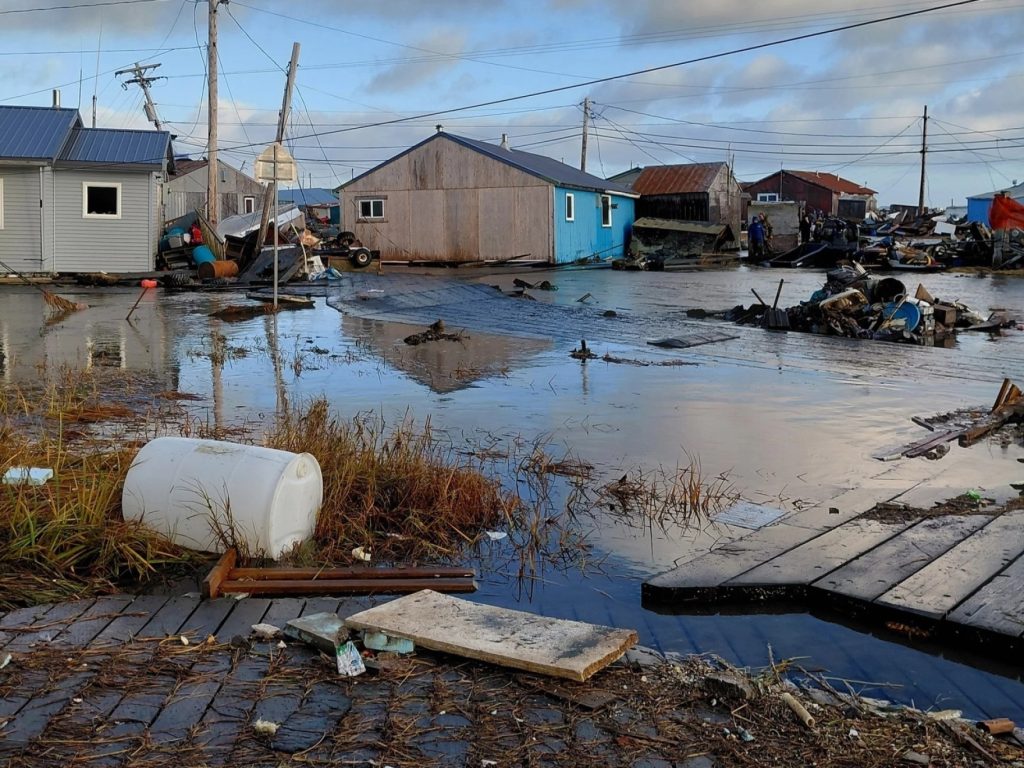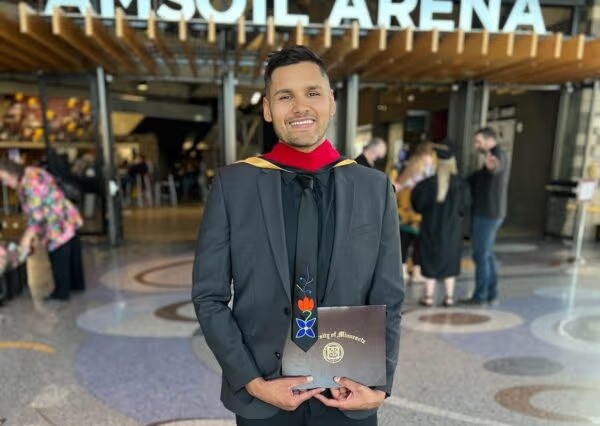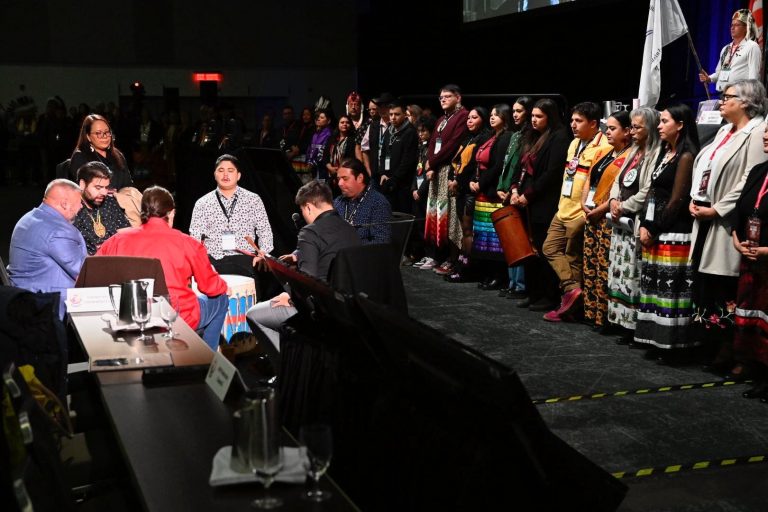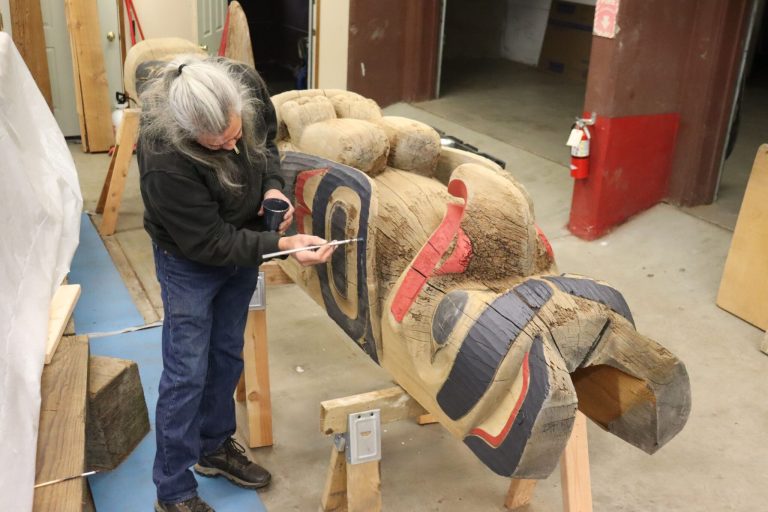Podcast: Play in new window | Download | Embed
Photo: Debris sits in water in Kipnuk, Alaska following high winds and flooding brought by the remnants of Typhoon Halong. (Jacqui Lang / Alaska Public Media)
Hundreds of people remain displaced a week after the remnants of a typhoon wreaked havoc on some of Alaska’s most remote and vulnerable communities.
Reporter Emily Schwing has this update.
One of the hardest hit communities is Kipnuk, a village that sits in the heart of Alaska’s Yukon-Kuskokwim Delta.
Last week, Tribal Administrator Tristan Carl made the tough decision to mass evacuate his friends and family.
Now, he says they have several needs including housing, clothing, and transportation, as well as access to foods that aren’t found in conventional groceries stores.
“I know we’re gonna be missing some of our subsistence food. Hopefully some locals around here will be able to drop, drop some off or even invite some families for some. And that’s how we lived off for many, many, many centuries.”
James Amik is also from Kipnuk. He says he, his friends, and family are still reeling from the storm.
“It’s gonna be in our minds for a while, you now. But the way I think we can get through that is if we talk like to our behavioral health and just get everything off of our mind, I think that would help us.”
Alaska’s governor declared a state disaster and has requested a federal disaster declaration from the Trump administration.
Alaska’s congressional delegation has also penned a letter to the president asking him to declare a federal disaster.
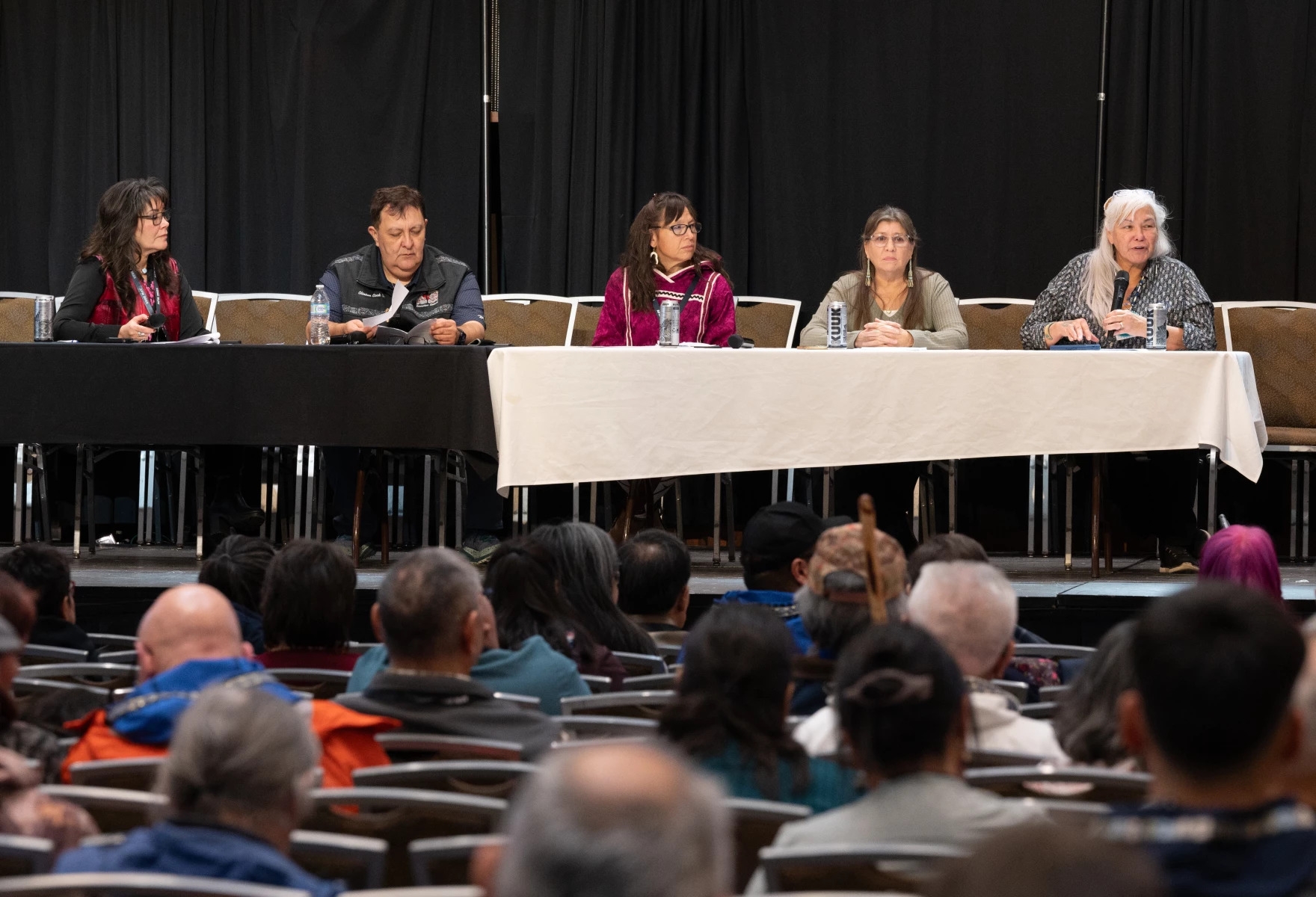
Representatives from several Alaska Native organizations speak at the subsistence panel at the Alaska Federation of Natives convention at the Dena’ina Convention Center in Anchorage on October 18, 2025. Gayla Hoseth, left, incoming AFN Co-Chair; Clinton Cook Sr., President for the Craig Tribal Association; Natasha Hayden, co-chair of the Kodiak Island tribal coalition; Patty Schwalenberg, executive director of the Alaska Migratory Birds Co-Management Council; and Karen Linell, executive director of the Ahtna Intertribal Resource Commission. (Photo: Matt Faubion / Alaska Public Media)
Meanwhile, when it comes to Native co-management of fish and wildlife in the state, engagement and unity are key.
That was the message at a panel about subsistence at the recent Alaska Federation of Natives (AFN) Convention.
The Alaska Desk’s Alena Naiden from our flagship station KNBA has more.
Representatives from several Alaska Native organizations called for a unified approach alongside government agencies to manage wildlife and fish when they met last week.
Clinton Cook Sr. is the Craig Tribal Association president. He emphasized the importance of prioritizing Alaska Native voices when making decisions about wildlife.
“Our people have always managed our lands. We know where the salmon run. We know where the deer are. We know when the clams are safe.”
Cook says the first step is engagement. He encourages tribal residents to participate in advisory councils for both federal and state regulatory agencies.
“So you have a voice in what happens in your region. That’s huge.”
A push for resource development in several Alaska regions has been met with opposition from some tribal groups.
Karen Linell is the executive director of the Ahtna Intertribal Resource Commission. She called for a composed and united response in the middle of a quickly-changing political environment.
“With the current administration, we need to try to hold our ground and not lose.”
Representatives talked about funding challenges, lack of guidelines, and the need to re-educate regional directors when they change with new administrations.
Linell says that one strategy that has made the difference over the years is collaborating with neighbouring regions and figuring out how to continue practicing traditional ways of life, without harming resources other regions rely on.
”Wait a minute, you do duck calls, right? When you’re out duck hunting? You know, we call a moose in, so why is it different? And so when we started to support each other, we started to see change.”
Promoting change also requires research, Linell says. She hopes that more tribal organizations will have capacity to monitor wildlife and fish and collect their own data that they can trust.
Get National Native News delivered to your inbox daily. Sign up for our daily newsletter today.
Check out the latest episode of Native America Calling
Wednesday, October 22, 2025 – Leonard Peltier calls for unity, vigilance
